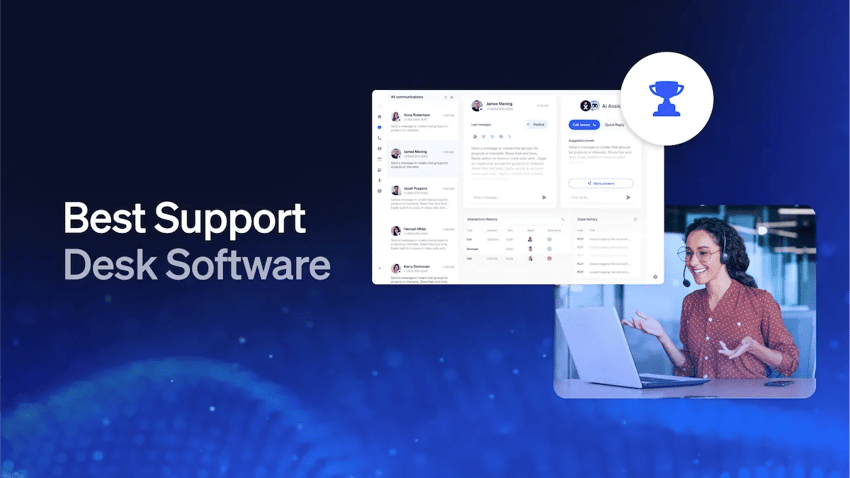As you scale your business to the next level, researching Customer Relationship Management (CRM) software is a fundamental step.
In this guide, you’ll learn about the components of successful CRM systems, including best practices that minimize costs and achieve higher revenue growth.
Not all CRM systems are created equal. When most people think of CRM, an operational CRM that spans multiple business functions comes to mind.
An operational CRM system supports sales, marketing, and service functions within a company. Dig in to learn the best practices for adopting this CRM in your own business.
- What is an Operational CRM?
- How Does Operational CRM Work?
- Differences Between CRMs
- Benefits of an Operational CRM
- CRM Best Practices
- Selecting the Right CRM Solution
What is Operational CRM?
There are a few primary types of CRM systems out there, often focused on one purpose like sales, service, or analytics CRMs. Rather than focus on a singular purpose, Operational CRM software blends all of these business processes into one. It’s what most people think of when referring to CRM software.
Definition:
Operational CRM
A centralized system that supports the sales, marketing, and customer service functions within a company that stores information on customers, leads, and employees using a shared interface.
An operational CRM is designed to improve routine business operations and securely store data on all your business activities with customers and prospects. Key CRM features enable businesses to measure, analyze, and tailor the customer journey in real time.
A VoIP system integrated with a CRM would be one example of an operational CRM. You can watch our 3-minute video below to learn more about how VoIP CRMs work:

How Does an Operational CRM Work
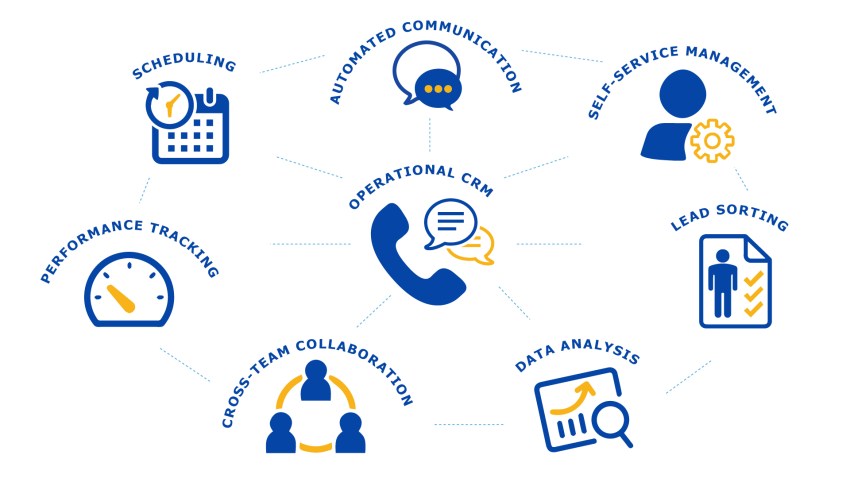
To understand how operational customer relationship management works, let’s peek into the business processes of a typical business across its various departments.
1. Marketing Campaigns
To drive business, marketing typically adds and stores new leads from tradeshows, digital marketing, or other demand-generation activities into the CRM. Online forms typically add leads to the CRM, and they might even kick off automated marketing like emails, flyers, or text messages.
For those just starting out, consider adding your existing email subscribers and past customers from your accounting software into your CRM.
2. Sales Activities
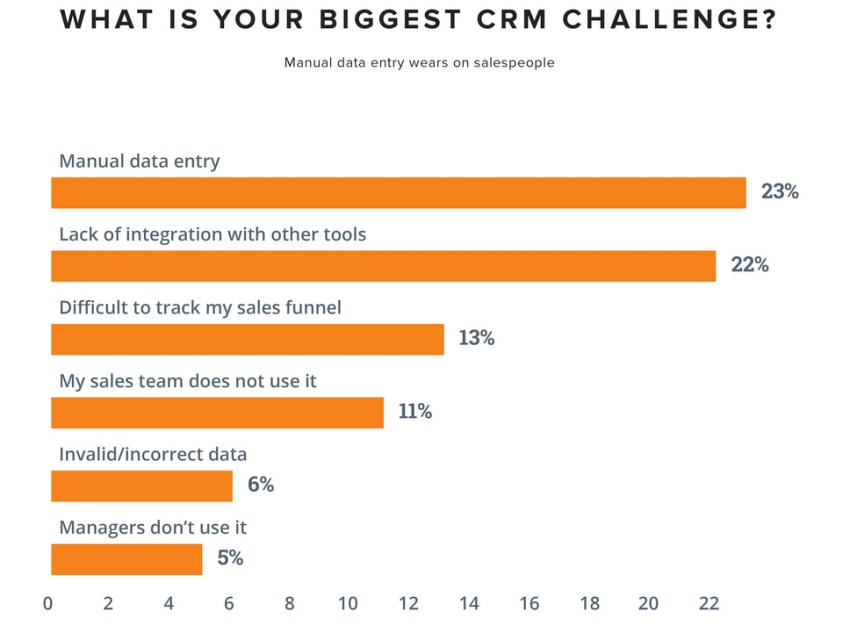
When someone responds to marketing campaigns, your sales team engages with leads through email, phone, and text. Ideally, people respond quickly, but reality dictates that most of them will require follow-up.
A high-performing sales rep will document all of their interactions, relevant notes, and next steps for each lead. They would update the contact record within the CRM. When the prospect converts, they will need to hand them off to the fulfillment side of the company.
The final stage in sales is to communicate a new customer’s requirements to their service and support teams. To do this, they store such information within their CRM.
Polling conducted by HubSpot points to manual data entry (23%) being the top pain point about using a legacy CRM. Following that, the difficulty in tracking the sales pipeline is a close third (13%) for user frustrations.
3. Service & Support
And finally, your service team has to deliver. Any miscommunication or unclear expectations fall on the customer support team. That’s never fun. Save them the hassle—and ultimately lost revenue—by documenting customer needs clearly. A CRM retains all this info from day one.
Traditionally, businesses have used helpdesk software or a shared email system. In 2020, the play to consolidate separate CRMs into one. One centralized view of the customer.
You might not have an implementation function for your company, such as if your company sells insurance. But it’s likely you have a service role. Even if it means replacement parts, repair, or technical support. When everyone accesses the same customer record, operational CRMs allow for better customer experiences.
Market research firm Gartner recommends business owners evaluate their five top-level CRM application categories: sales, marketing, customer server, digital commerce, and field service.
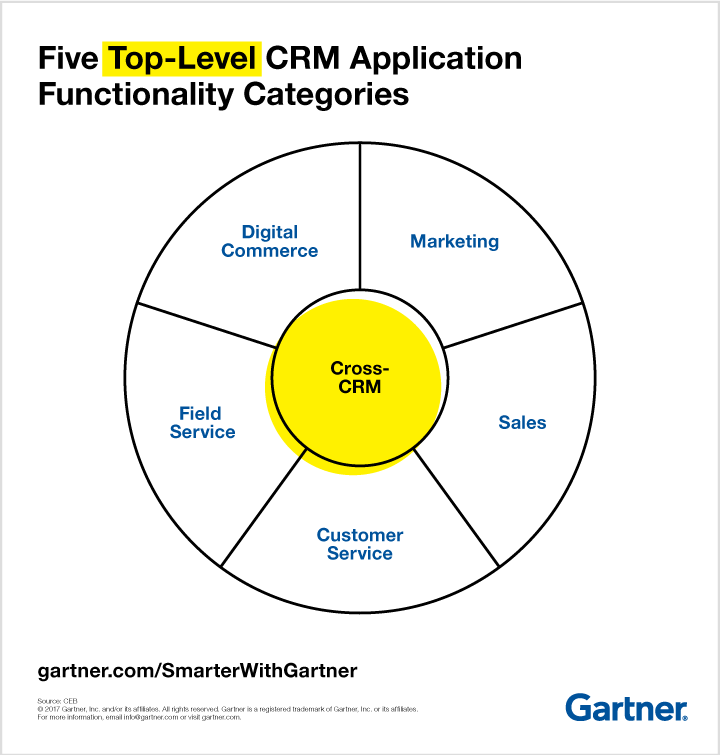
The firm recommends that business leaders take the time to deeply understand how an operational CRM will advance their business strategy. Typically, businesses underestimate their needs, and this can trip up performance later.
Related: 10 Steps to Develop a Winning CRM Strategy
An Example of Operational CRM
Let’s look at a practical example for a moment.
Let’s say you run an automotive dealership, and your marketing team targets customers who want red cars. Your sales team, however, is pushing blue cars, and your customer service team is helping drivers with yellow cars. In this case, a lot of people waste their time and effort. This costs the business real money.
An operational CRM helps tie in these teams and align everyone’s goals. CRM operations are best when marketing lead data is directly linked with sales goals, and current or prospective customer data is fed to the service team, so they can provide the best support possible.
This is really where operational CRM shines.
By aligning the various departments within an organization, businesses can automate processes and improve the overall customer experience. This automation then allows businesses to spend less on labor (paying employees for hours of manual work) and strategically invest in areas that they want to grow.
To better illustrate how the CRM system automates processes, let’s look at what can be automated in a typical sales department.
Sales Automation
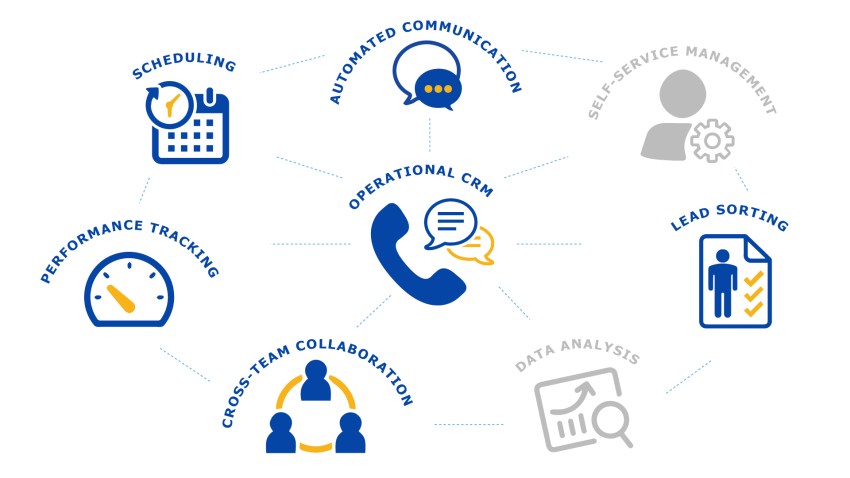
Any operational CRM worth its salt will track leads, prospects, and sales. But a great system will do much more than that, from automating initial contacts all the way through setting up sales meetings.
Gone are the days of flipping through the phone book and cold-calling potential customers. A well-equipped team makes sales with targeted lead data available to them via an operational CRM system.
And it doesn’t stop at the sale. A CRM can automate upsell or cross-sell communication, maintain a follow-up schedule, and track sales performance.
Aberdeen Research Group offers supporting data that sales automation makes a huge difference. “Best-in-class” firms using sales automation outperform laggards by up to 217% in return on investment. The firm’s research concludes that further investment in operational CRM translates to favorable real-world business outcomes:
- 52% more proposals, quotes, or RFP responses delivered to prospects (14.25 per sales rep, per month, vs. 9.40)
- 32% higher overall team attainment of sales quota (62% vs. 47%)
- 23% higher lead conversion rate (33% vs. 27%)
Examples of Sales Automation
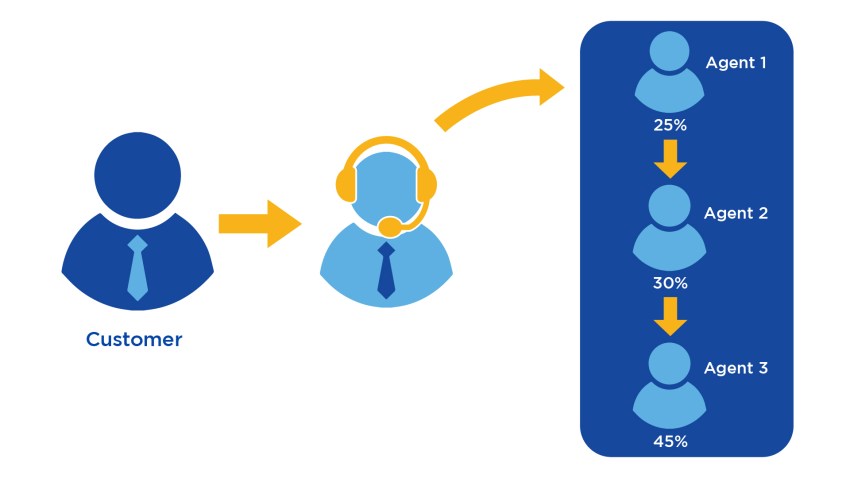
Automated Reporting
Sales teams are notoriously competitive. Imagine giving them a report each morning of goals and productivity, contacts made, and sales closed. Talk about a push in motivation. They love challenges—and crushing them.
From a management perspective, reporting can be reduced to selecting the data you need and generating the report. No more sifting through spreadsheets, hiding columns, sorting data, and trying to figure out formulas. Whenever you need to get real-time sales data, you have it.
Lead Distribution
A practical use-case for distributing leads would be if you have a trainee or a sales lion who closes every sale on the same phone system. You’d probably want to prioritize more leads for the closer to the team. An operational CRM keeps your sales pipeline flowing so leads don’t get stuck and your revenue is predictable.
Likewise, you also want to give your newer salespeople the opportunity to grow and develop their sales skills.
Get the best leads to the best sales reps – automatically. Set your team (and your company) up for success. Don’t let leads languish on a list somewhere until you have time to assign them.
Lead Prioritization
Use the data available at your fingertips to prioritize leads. Classify which leads are hottest and which are outliers, and funnel those results to your sales team. Certain marketing assets and sales activities carry more weight than others.
Save time by focusing your sales efforts on leads who are more likely to buy. Once that list is exhausted, then move on to the other leads. It seems easy, right? But you can only do this with prioritized lead data.
Sales Content Repository
Are your sales reps recreating the wheel every time they send a proposal? (Hopefully not.)
Store, track, and manage content in an operational CRM so your team has quick access to anything they might need to provide for a client. Not only does this save time, but it helps with quality control. No more ad-hoc sales letters filled with typos. Simply grab one from the repository, tweak it, and send it off.
Scheduling Meetings
Managing a successful salesperson’s calendar can be nearly impossible. Don’t make your sales team act as their own personal assistants. Harness the power of your operational CRM to do the hard work for them.
Find a great scheduling tool and integrate it with your CRM. Prospects can then see your rep’s availability and book a meeting that fits into their schedule. All this without direct involvement from the sales rep.
Marketing Automation
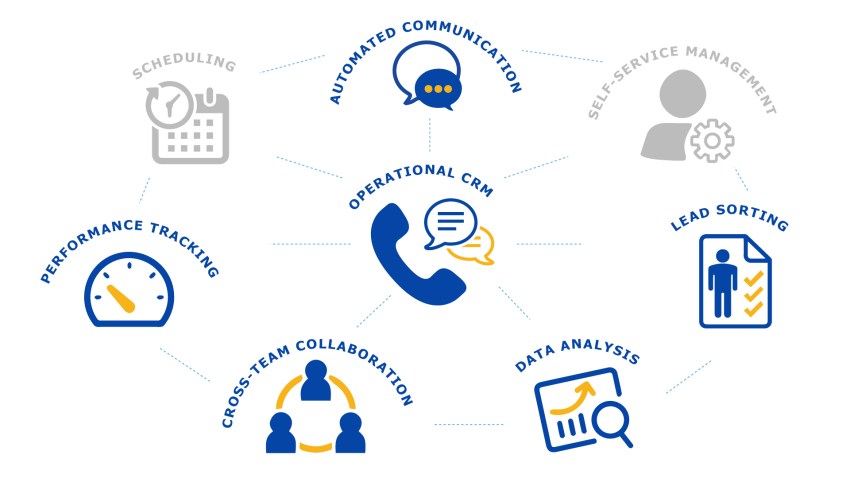
Your marketing team should be focused on creating powerful marketing campaigns. They shouldn’t spend time maneuvering through painful spreadsheets or manually analyzing data. That’s what operational CRM gives your marketing team leverage with marketing automation.
The goal of automated marketing campaigns isn’t to coerce your contacts to buy. It’s to facilitate a buying environment where someone is ready to buy and primed with the right information. This could be through customer stories, helpful datasheets, and nifty checklists to help them feel excited about your product or service.
Marketing Automation Campaigns
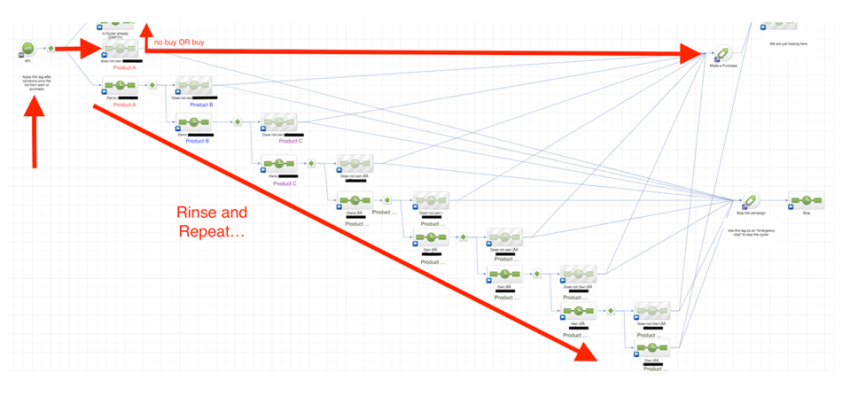
Welcome Campaigns
You have the opportunity to put your company, your brand, in the best light. The ball is in your court. Instead of waiting and hoping a prospect chooses your company, push them in the right direction with automated welcome emails.

Even after an introductory call, you should send a welcome message so the prospect becomes conditioned to hear from you proactively.
Don’t depend on a person to manually send out a welcome email every time someone visits your site or calls your company. They can’t keep up. And why waste the manpower, anyway? Automate it with your operational CRM system.
Onboarding Campaigns
After you’ve made the sale, now what?
There’s a good chance the excitement is going to wear off in a few days. Maybe they lost interest. Maybe they don’t know how to use their new product.
Hint: Your customers don’t know how to benefit from your product as much as you do.
In any case, building a loyal brand following takes communication. You want your customers to experience your product and service and love it. Then you want them to buy more.
This is where onboarding campaigns come in. Automate contact with your new customers through your operational CRM. Reach out, and ask them how they’re doing. Invite them to call you if they need help. Ask for their feedback. When the customer knows you’re still around after the sale, they’ll be a lot more likely to use your thingy and talk about it.
Repeat Purchase Campaign
What’s next after the onboarding campaign? A repeat purchase campaign, of course.
Now that your customers are delighted with their purchase, it’s time to give them even more. You want to check on their past purchases to see if there is relevance for additional products or services.
It’s a lot more expensive to get new customers than it is to get repeat business from existing customers.
Re-engagement Campaign
So your customer didn’t come back and buy the new-and-improved service.
Every single customer is a potential repeat customer, no matter how long ago they purchased from you. Use your operational CRM to track a customer’s last purchase and their last interaction with your company to target them in a re-engagement campaign.
Support Automation

Every customer interaction is a chance to grow your company. Not just by making more sales but by providing excellent customer support.
Automating customer interaction and support is where an operational CRM can really shine. From scheduling customer follow-ups, tracking problems, and supporting client self-service, your CRM can do a lot of the dirty work for you.
Support Automation Examples
Self-service
By now, most companies offer a certain degree of automation and self-service with it comes to customer support. We’re so used to self-service, in fact, that we’re frustrated when it’s not available to us.
The easiest and most “close to cash” method of customer self-service is managing their billing and payment information. Offer a customer portal to sign in and update their method of payment, storing it safely in your operational CRM, not on a sticky note.
Satisfaction Surveys
After every interaction, or on a semi-annual basis, you should survey your customers. By doing this, you will unearth powerful insights. Instead of paying for additional survey software, using one that’s deeply integrated with your operational CRM is ideal.
Instead of cleaning up the data and cursing at your screen while creating a VLOOKUP function in Excel, you could just know what your customers feel by accessing their records or pulling a quick report.
This is the beauty of an operational CRM – you don’t need to mess with the data to know your customers and prospects.
Case Routing & Escalation
Emails get lost. Voicemails get ignored. With built-in case routing and escalations, especially for certain keywords, you can efficiently direct matters to the right people. Forget about using half-baked integrations.
When a case is escalated, your operational CRM will notify your team that they need to respond and even halt all future marketing campaigns until it’s resolved.
Related: The Top 10 Best Customer Service Examples of All Time
What makes operational CRM different?
We mentioned a few different types of CRMs. Here is a quick summary of their functions.
Operational CRM
- Primary Functions: Sales, Service, and Support.
- Perfect for customer-facing functions
- Connects marketing, sales, and customer service teams
- Automates many functions, including scheduling, follow-ups, and contacts
- Facilitates customer self-service functions
Analytical CRM
- Primary Function: Data Analysis
- Collects and analyzes customer data
- Tracks and analyzes key performance indicators
- Helps management make business decisions and set long-term goals
Collaborative CRM
- Primary Functions: Document Sharing and Employee Engagement
- Acts as a database for internal company information
- Supports cross-functional processes
- Addresses internal communication breakdowns
Operational CRM Benefits
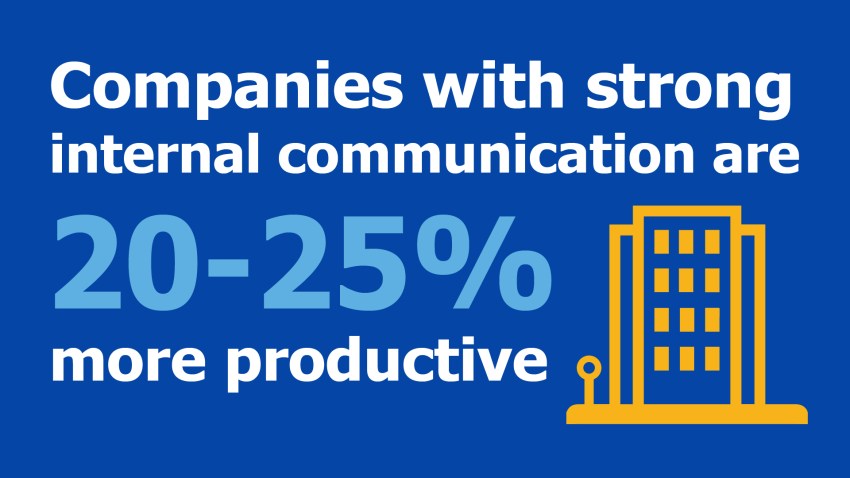
While each type of CRM has its place, and one may fit a company more than another, operational CRMs greatly benefit companies that want to drive customer satisfaction and loyalty.
Here are several powerful benefits an operational CRM has over other types of CRMs.
Enhance marketing processes – Drill down into your customer data with laser focus. Learn which are the likely buyers and then launch campaigns to target similar buyers. With the help of the customer data in your CRM, you can analyze buying patterns and customer demographics to tailor the best possible marketing campaigns.
Increase internal communication – It’s no secret departments that don’t communicate are usually not working toward the same goal. When an organization has access to the same information, it puts them all on the same field, playing the same game. The operational CRM’s ability to capture, store, and disseminate data makes it a great tool for inter-departmental communication and information sharing.
Maximize upselling and cross-selling – Operational CRMs start capturing your customers’ data from the first touchpoint and maintain those records through the customer lifecycle, logging each sale, contact, and issue. This sets up your sales team for the perfect upsell and cross-sell opportunities. With their purchase history, sales reps can use sales tactics tailored to each client.
Increase Revenue – Operational CRMs are known to produce more than $8 of value for every $1 invested in them. At an 8:1 ROI, you can’t go wrong with a CRM for your business. Scaling your sales team and giving them tools to sell and close better will undoubtedly increase your company’s revenue.
Increased Customer Satisfaction – If you can’t support your customers and provide them with great service, they won’t stick around. That’s why it’s important to put your CRM system in place. Customers hate repeating themselves, so arming your staff with a centralized CRM system will improve the customer experience instantly.
Equipping your customer service team with a CRM allows them to provide accurate, timely, and well-informed information. They can see when the customer has called in the past and what was discussed on those phone calls. They can see when the customer has a problem and contact technical support.
An operational CRM provides all this data and more, so your customer service team can have a holistic view of the customer’s relationship with your company. This is how great customer service experiences are born.
Related: 30 Customer Service Tips (with Examples) to Try
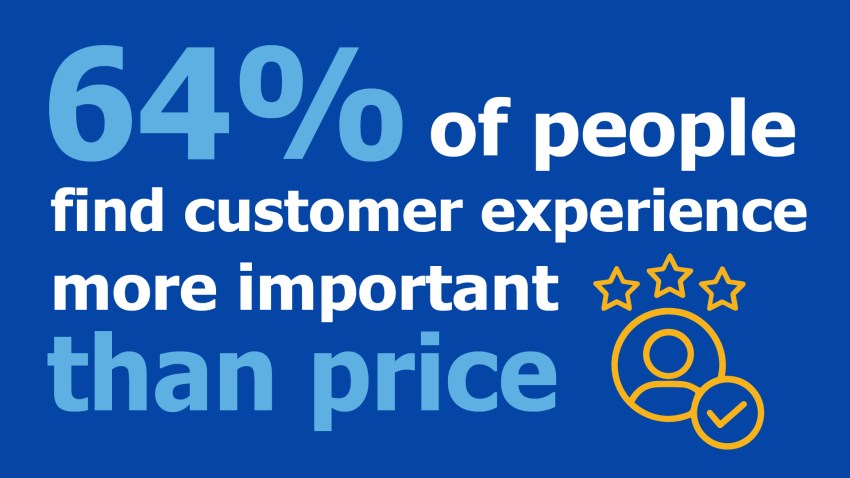
CRM Best Practices
It’s one thing to select a CRM to grow your business and another to put it into practice. We’ve all experienced failure setting up CRM before. Avoid the common pitfalls of customer relationship management software by employing these best practices.
- Scope out your needs and requirements. Analyze your internal needs and compare CRM software to see if it meets your business needs. Plan to immerse all of your business and customer data into one operational CRM platform.
- Survey your internal sales team and support staff. Observe how they interact with leads and customers. Document the entire sales process so you can activate your CRM with ready-made campaigns.
- Replicate your successful marketing campaigns and front-load the data into your CRM. This includes tracking data, custom fields, and helpful information for your sales team to understand. The history of customer interactions helps everyone serve customers better.
Interested in a soup-to-nuts CRM strategy for your business? We’ve compiled the best practices found in the industry’s most successful companies.
Selecting the Right CRM Solution
For many business owners, they know the feeling of Goldilocks all too well. Most CRMs are designed for mega-corporate enterprises with thousands of staffers. While there’s nothing wrong with that, it can be intimidating to land on the right CRM for your business.
The better solution is a perfect blend of the ease and convenience of an operational CRM for your needs. Big enough to actually hold essential business information but simple enough to get up and running in a few days. You want a CRM system robust enough to manage all of your prospect and customer interactions.
Nextiva’s Sales CRM is the right fit for business owners who are looking for the benefits of a custom-built system (it adapts to you, not the other way around) without the burden of a huge IT and staffing commitment. Likewise, Nextiva’s Service CRM is for you if you manage service tickets.
No matter your needs, there’s a CRM solution out there to support your business operations. As your business grows, your CRM software grows with you.

















 Customer Experience
Customer Experience 







